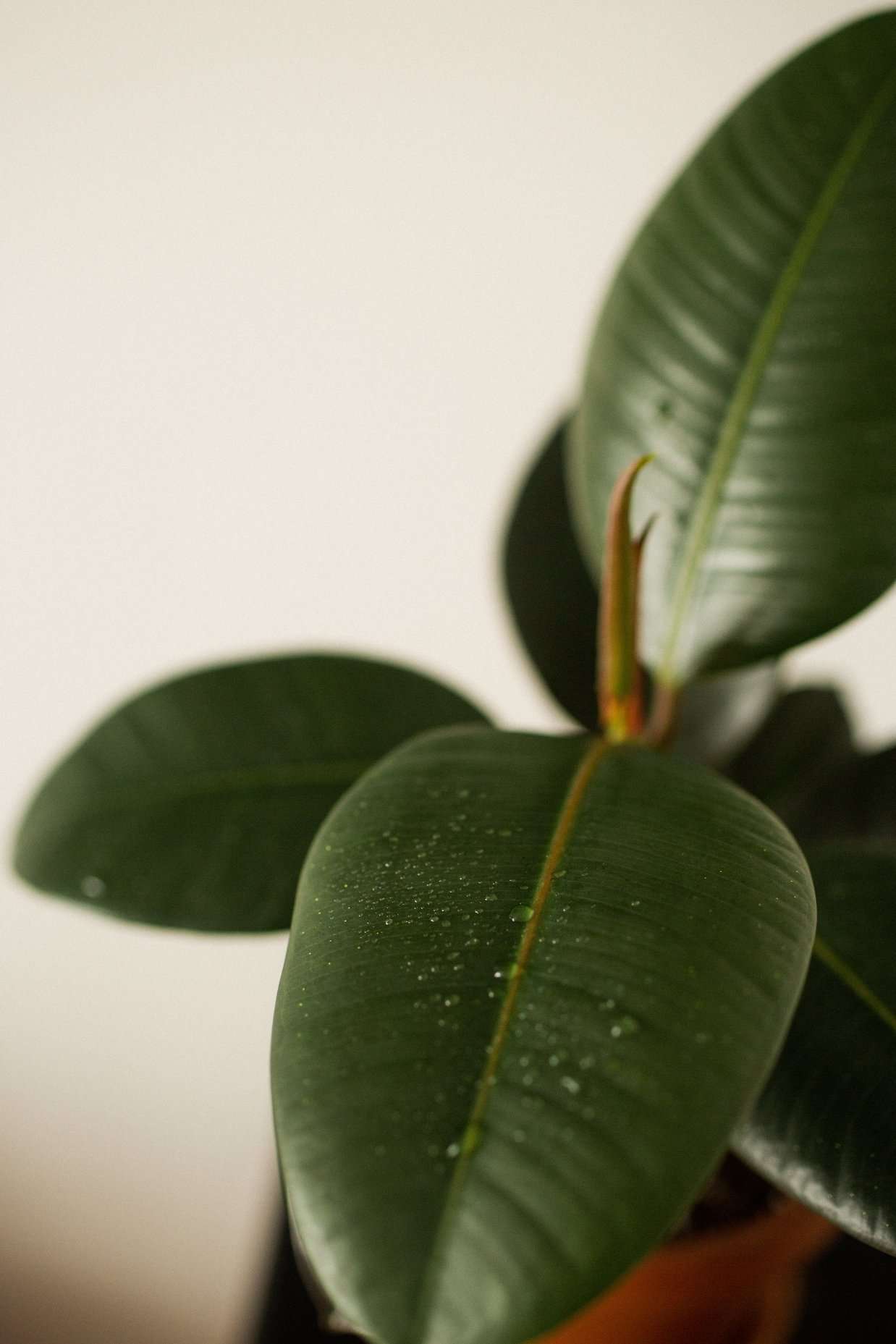Ficus Elastica, commonly known as the rubber plant, is a popular and resilient indoor plant that belongs to the Ficus genus.
Ficus elastica can grow to be a large houseplant, reaching heights of several feet. The plant has broad, glossy, and dark green leaves that are often oval or elliptical in shape. It has an upright and bushy growth habit.
Ficus elastica is a popular choice for indoor decoration, adding a touch of greenery to homes and offices. Like many houseplants, it contributes to indoor air purification.
In this guide, we’ll cover every aspect of caring for this stunning plant, ensuring your green companion flourishes.
| Category | Details |
|---|---|
| Kingdom | Plantae |
| Division (Phylum) | Angiosperms (Magnoliophyta) |
| Class | Eudicots |
| Order | Rosales |
| Family | Moraceae |
| Genus | Ficus |
| Species | elastica |
| Common Name | Rubber Plant |
| Native Region | Southeast Asia (India, Nepal, Bhutan) |
| Type | Evergreen shrub or tree |
| Mature Height | Up to 100 feet (30 meters) in the wild |
| Leaves | Large, glossy, elliptical or ovate |
| Leaf Color | Dark green, variegated varieties exist |
| Light Requirements | Bright, indirect light |
| Watering Needs | Allow soil to dry between waterings |
| Soil Type | Well-draining potting mix |
| Temperature Range | 60-75°F (15-24°C) |
| Humidity | Moderate to high humidity preferred |
| Propagation | Stem cuttings, air layering |
| Toxicity | Mildly toxic to pets and humans |
Selecting the Right Location
Choosing the optimal location for your Ficus Elastica is crucial for its overall well-being. These plants thrive in bright, indirect light, making them perfect for spaces with filtered sunlight.
Avoid exposing them to harsh, direct sunlight, as this can lead to leaf burn. Indoors, place your Rubber Plant near a north or east-facing window for the best results.
Soil and Potting
To ensure proper growth, it’s essential to use the right soil and pot for your Ficus Elastica. Opt for a well-draining potting mix, preferably one specifically formulated for tropical plants.
The container should have drainage holes to prevent waterlogging, promoting aeration of the roots. Repot your Rubber Plant every 1-2 years to refresh the soil and provide additional space for growth.
Watering Techniques
Proper watering techniques are vital for the health of your Ficus Elastica. Allow the top inch of the soil to dry out before watering, as these plants prefer slightly moist conditions.
Be cautious not to overwater, as this can lead to root rot. Adjust your watering frequency based on the season – they may need more water during the growing season and less during the dormant winter months.
Temperature and Humidity
Maintaining the right temperature and humidity levels is essential for a thriving Ficus Elastica. Aim for a temperature range of 60-75°F (15-24°C) and ensure moderate humidity.
If the air becomes too dry, consider placing a humidifier nearby or occasionally misting the plant. Protect your Rubber Plant from drafts, as they can stress the plant and impact its overall health.

Fertilizing Routine
Implementing a proper fertilizing routine is key to promoting healthy growth in your Ficus Elastica. During the growing season (spring and summer), feed your plant with a balanced liquid fertilizer every 2-4 weeks.
Reduce fertilization in the fall and winter when the plant is dormant. Always follow the recommended dosage to avoid over-fertilizing, which can harm the plant.
Pruning and Shaping
Regular pruning is essential for maintaining an attractive and well-shaped Ficus Elastica. Prune the plant to control its size, remove any yellowing or damaged leaves, and encourage bushier growth.
Use clean, sharp pruning shears to make precise cuts, and consider wearing gloves to protect your hands from the plant’s latex sap.
Common Issues and Solutions
Even with the best care, Ficus Elastica may face some common issues. Here are quick solutions to address them:
Yellowing Leaves
Yellowing leaves may indicate overwatering. Allow the soil to dry out before watering again, and adjust your watering frequency.
Leaf Drop
Sudden leaf drop can be a response to environmental stress. Ensure stable conditions and proper care to minimize stress on the plant.
Pests
Keep an eye out for pests like scale insects or spider mites. Treat infestations promptly with insecticidal soap or neem oil.
Conclusion
Congratulations on embarking on the journey of cultivating a healthy and vibrant Ficus Elastica! By following our comprehensive guide, you’re well on your way to becoming a successful plant parent. Remember, consistency in care and attention to detail are the keys to a flourishing Rubber Plant.
FAQs
Does Ficus elastica need sunlight?
Answer: Ficus elastica prefers bright, indirect light. It can tolerate some shade but should be protected from direct sunlight, especially during the intense afternoon sun.
Is Ficus elastica a good indoor plant?
Answer: Yes, Ficus elastica is an excellent indoor plant. It’s valued for its attractive foliage, adaptability to indoor conditions, and air-purifying qualities.
How do you keep Ficus elastica alive?
Answer: To keep Ficus elastica thriving:
- Provide bright, indirect light.
- Allow the soil to dry between waterings; avoid overwatering.
- Use well-draining soil.
- Maintain stable and warm temperatures.
- Protect from drafts and cold conditions.
- Fertilize occasionally during the growing season.
Is rubber plant good for home?
Answer: Yes, the rubber plant (Ficus elastica) is a popular choice for home decoration. Its robust nature and attractive foliage make it a favorite among indoor plant enthusiasts.

